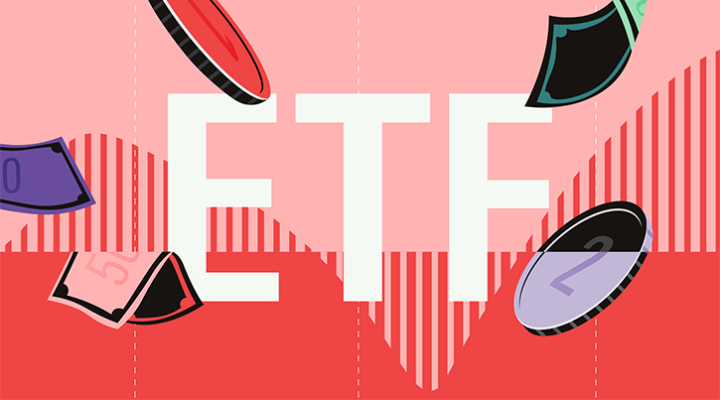
The end of the year is fast approaching, and many savers' thoughts naturally turn to the topic of money. Christmas is looming, and for some it looks more unaffordable than ever.
For those with money put to one side, one answer might be to raid your ISA, which may well beg further questions about the health of your savings. Being an "ISA millionaire" is a term often banded about by the money sections of national newspapers, but getting there can be tricky.
As with a £1 million pension pot, a £1 million ISA portfolio is still a fantasy for many. But what if you have this golden egg? For our Special Report Week on financial planning, I’m going to revisit the analysis I wrote two years ago in the article Can You Retire With a Million Pounds?.
At that time, my answer was "possibly", with the caveat of how quickly you spend it, what your obligations and spending assumptions are: a 65-year old with a final salary pension and no mortgage is in a vastly different position to a 45-year old with two young children and a large mortgage. You may start with a frugal mindset but find yourself missing certain luxuries like cruises, new cars, and giving gifts to children and grandchildren. And then there's the big one: how long are you planning to live?
Inflation is also now the biggest elephant in the room. When I last ran the numbers consumer price inflation (CPI) was around in 2.8%. Last year it hit 11.1%, a 41-year high. I’ve now had to make a big adjustment.
In 2021, I surmised a £1 million pot would last 40 years if you withdrew £25,000 a year. But even with inflation at 2.8%, if you increased your withdrawals each year to keep up with the cost of living, this would last 28 years. That’s now reduced to 16 years with an inflation rate of 10%. But inflation isn't exactly certain.
For one, the Office for Budget Responsibility forecasts CPI will fall back to 2.9% by the end of this year. Those who put their faith in economic forecasts may now be thinking the coast is clear. A return to 2.9% would pretty much take us back to 2021 and my 20-year horizon.
Inflation near 3% in the next 10 to 20 years seems more likely than a rate of 10% so let’s hope I can re-run these numbers next year to add some years back to our theoretical ISA millionaire. Moreover, let’s hope the OBR is right!
One sobering thought: the Pensions and Lifetime Savings Association has just upgraded its forecasts for a "comfortable" retirement to £37,300 a year for a single person. £25,000 a year will leave you £12,300 a year short. Where's the difference coming from?
Advisers Have Customised Solutions
I'm not a financial adviser and my calculations are pretty "back of the envelope", so I don't think you should take my forecasts as writ. You certainly shouldn't base your plans on them.
That's where the IFA comes in. An adviser can work out what works for you (and the income and inheritance tax implications). And here’s the crux: my theoretical £25,000 a year withdrawal may be plenty for some. For others: not so much.
Nowadays, people's personal finances can be far more complex than those of their parents and grandparents. If you're lucky, you may have a mixture of income sources, perhaps involving defined benefit and defined contribution pensions, the state pension (soon to be uprated by 10%), buy-to-let income, inheritance windfalls, equity release, and that ISA portfolio. If that latter one has £1 million in it then you have the cherry on the cake.
If you’re in this fortunate position, younger generations may depend on you to help them with school and university fees. You may even be supporting elderly parents yourself. Stepchildren can also be in the mix. It's easy to have a lot in the "plus" column, and many more outgoings than your own parents did at your age.
Prospective UK retirees can take comfort in knowing they’re not alone in focusing on a "big number" to get the green light to leave work. In Canada they’re asking the same question. In France they're rioting about it.
A poll by wealth manager BMO found that Canadians had upgraded their required retirement pot to C$1.7 million from C$1.4 million three years ago – because of the rising cost of living. Rather neatly, 1.7 million Canadian dollars is more or less £1 million (it's precisely £997,865!).
My colleague Ruth Saldanha has looked the issue from a Canadian perspective, but there are general lessons in the approach that could be helpful to a (prospective) ISA millionaire. She leans on the wisdom of Morningstar director of personal finance Christine Benz, who has made the issue of having "enough" money and "outliving your savings" her pet subjects.
Rather than starting with "is a million enough?", then, Benz says you should focus on how much you plan to spend and make it sustainable. "At a bare minimum, anyone embarking on retirement should understand the basics of spending rates: how to calculate them, how to make sure their spending passes the sniff test of sustainability given their time horizon and asset allocation, and why it can be valuable to adjust spending over time,” she says.
No Magic Formula
One traditional way of calculating how much you can withdraw from the magic pot is to use the "4% rule". To keep your pot intact, assume your remaining money is rising above inflation, then you can safely withdraw 4% each year. But Benz says this now can be treated as flexible rather than hard and fast rule.
"Whereas last year’s research suggested that a 3.3% withdrawal rate was a safe starting point for new retirees with balanced portfolios over a 30-year horizon, this year’s research points to 3.8% as a safe starting withdrawal percentage, with annual inflation adjustments to those withdrawals thereafter," she says.
Ultimately it’s very hard to assess how much you will need to live on to live well, even if your starting point is a government-mandated retirement age for a state pension. Your spending patterns will change as you get older. And it may be better to leave something to your descendants than running out and spending your final years in poverty.
While inflation is the current enemy of long retirements, there are some silver linings. Equity valuations are now lower after last year, while bond and cash yields are much higher – this boosts the likely level of income a retiree can receive every year. And that means your money is working harder.
This article was originally published in March 2023 for our Special Report Week on ISA investing. It is reproduced here with updates for Financial Planning Week












.jpg)
















